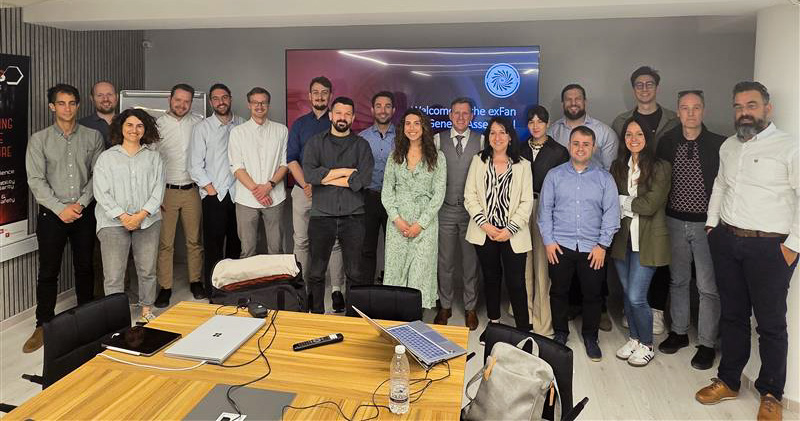And the investigations continue…
The exFan project continues to make investigations across several technical areas, focusing on aircraft integration, propulsion system layout, and heat exchanger development.
WP3: Propulsion System Requirements & Layout
Aircraft Integration and Boundary Conditions
Work began with an investigation into aircraft boundary conditions, comparing conventional and novel propulsion layouts. A traditional configuration with four propulsors under the wings offers simplicity, full redundancy, and easier inflow management, but limits heat exchanger (HX) size due to nacelle constraints. For the exFan baseline aircraft, mass estimates of all components have been made, with special attention to the propulsion system and a detailed flight profile from take-off to cruise.
Hybrid Energy System Layout
A complete layout of the hybrid energy system has been developed. A stand-alone fuel cell (FC) is not sufficient—auxiliary systems are needed, including fans, compressors, power electronics, and thermal management. Major challenges addressed include minimizing weight, handling waste heat within FC temperature limits, and managing high power needs due to low ambient pressure at altitude.
Preliminary Sizing and System Layout
Three models have been developed to support system design: a sizing model, an environmental model, and a heat propulsor model. These helps guide design choices by evaluating key parameters and system sensitivities.
Requirements and Environmental Scope
Operational and fuel production emissions of current and alternative aviation technologies have been quantified to support a comparative assessment with the exFan concept. This forms a critical input for sustainability evaluations.
WP4: System Concept Development
WP4 follows a three-phase approach:
- Phase I focus on defining requirements and setting up models to support integration decisions.
- Phase II involves system-level investigations to identify the best overall concept.
- Phase III will deliver detailed designs, 3D integration models, and simulations for thrust, heat rejection, and airflow.
During WP4 specific solutions for FC thermal management have been found that aim at reducing FC heat load during critical flight stages and at improving the efficiency of heat transfer to the ambient environment. Concept investigations on propulsion system level have shown that these solutions allow take-off even on hot days, while not oversizing the heat exchanger for cruise condition. Additionally, a whole exFan system concept that encompasses the mechanical powertrain, the energy system, thermal management system and heat propulsor have been created.
WP6: Heat Exchanger and Surface Design
To improve the heat exchanger’s performance and durability, several surface treatment techniques are under investigation. These include chemical polishing and electroless NiP coatings. Treatments are being tested on complex geometries produced via additive manufacturing, including internal channels. Goals include better resistance to fouling and corrosion, improved heat rejection, and reduced drag.
Building Networks
Vienna Aviation Days 2025 – Join the Discussion
The Vienna Aviation Days return on 07-08 July 2025 in Vienna, Austria, bringing together experts from research, industry, and policy to explore the future of aircraft propulsion. The event will feature discussions on emerging technologies, challenges in scaling up innovations, and opportunities for collaboration.
Organized by the exFan Project and powered by Advanced Drivetrain Technologies GmbH, this event is open to all. The registration is still open. A preliminary agenda is now online. Stay tuned for updates and be part of the conversation!
Follow our progress
The exFan project is advancing hydrogen-electric propulsion with a focus on practical industrial applications. Stay informed on our developments and key milestones by visiting our website and following us on LinkedIn, X, and YouTube.
Join us in shaping the future of aviation through research-driven innovation.


Funded by the European Union. Views and opinions expressed are however those of the author(s) only and not necessarily reflect those of the European Union or CINEA. Neither the European Union nor CINEA can be held responsible for them.
